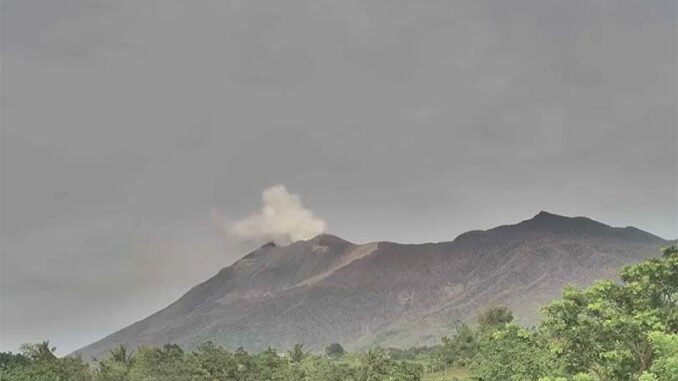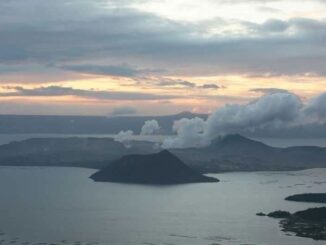
MANILA, Philippines — Continuous degassing from Kanlaon Volcano’s summit crater has led to intermittent emissions of volcanic ash, the Philippine Institute of Volcanology and Seismology (Phivolcs) said on Saturday, October 19.
Phivolcs shared a visual update of Kanlaon Volcano on Negros Island via X, indicating that the volcano’s summit is “currently obscured by clouds.”
In its 12:30 p.m. bulletin, Phivolcs has recorded brief episodes of gray ash emissions from the summit crater due to ongoing degassing.
LOOK: IP camera monitors of the Kanlaon Volcano Network have recorded volcanic ash being intermittently “entrained” or brought out by continuous degassing from Kanlaon’s summit crater. The volcano summit is currently obscured by clouds. Alert Level 2 prevails over Kanlaon… pic.twitter.com/gvp7EEQsyr
— PHIVOLCS-DOST (@phivolcs_dost) October 19, 2024
“These ‘ashing’ events were observed at 6:41 a.m., 7:01 a.m. and 8:01 a.m. and lasted two to six minutes based on visual observations; no detectable seismic or infrasound signals of these events were recorded,” Phivolcs said.
“The events generated light-gray plumes that rose 500 meters above the crater before drifting southwest,” it added.
Traces of ash have been reported in Barangays Yubo and Ara-al in La Carlota City, as well as Barangay Sag-ang in La Castellana, while residents in Barangay Yubo also experienced sulfurous fumes.
Cloud cover obstructed visual observation of the summit for the rest of the morning.
Volcanic sulfur dioxide (SO2) emissions from Kanlaon’s crater averaged 2,769 tons per day as of Friday.
SO2 emissions have surged since the June 3, 2024 eruption, now averaging 4,133 tons per day.
“Volcanic ash in the degassing plume signifies open vent conditions in which volcanic gas can carry fine debris from fractured rock or even from the margins of shallow magma beneath the edifice,” Phivolcs said.
Kanlaon Volcano remains under Alert Level 2, which signifies increasing unrest.
Residents are advised to stay away from the four-kilometer-radius Permanent Danger Zone due to potential hazards like pyroclastic flows and rockfalls.
Ashfall precautions, including wearing masks, are advised for affected areas.
Pilots should avoid flying near the summit, and communities near river systems on the volcano’s southern and western slopes should prepare for possible lahars during heavy rains.
Kanlaon Volcano erupted on June 3, sending ash plumes up to 5,000 meters high. This prompted Phivolcs to raise the status of Kanlaon Volcano from Alert Level 1 to Alert Level 2.





Be the first to comment